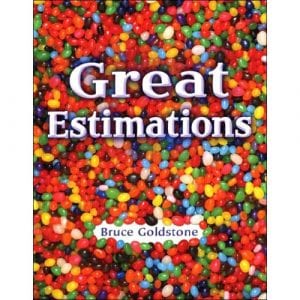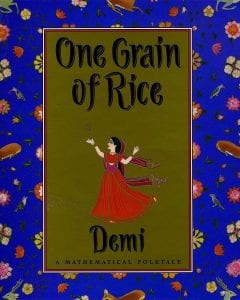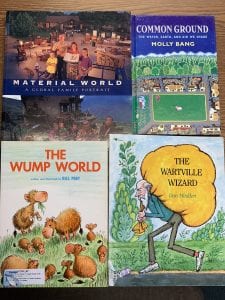There are 7.2 billion people living on our planet and 319 million of those people live here in the United States. The world grows at a rate of 1.2% and we add a billion people to our planet every 12 years. It is easy to throw around these large numbers, but it can be difficult for adults and students alike to visualize just what they mean. How big is a million? How big is a billion? Just how fast is exponential growth?
One great way to introduce large numbers to students is through the use of children’s literature. With that in mind, we’ve compiled a list of five excellent children’s books that explore mathematical concepts like millions vs. billions, scale, exponential growth, estimation and more – read on!
1. How Much is a Million by David M. Schwartz -Through imaginative illustrations, How Much is a Million strives to provide children with tangible ways to grasp what a million and a billion of something might look like. (PopEd Activity Match: Millions and Billions)

2. Great Estimations by Bruce Goldstone – This colorful book of photos helps train the eye and mind to estimate quantities – everything from jellybeans in a jar to a crowd of people in a pool. Do you think there are more than 2,000 “elbows” in a box of elbow macaroni? (PopEd Activity Match: How Many Fish in the Sea?)
3. Rock, Brock, and the Savings Shock by Sheila Blair – Twin brothers each get paid by Gramps for doing chores – one spends, the other saves. Gramps keeps doubling their savings and the impact of exponential growth quickly becomes clear. (PopEd Activity Match: Population Riddles)

4. One Grain of Rice: A Mathematical Folktale by Demi – In this traditional tale from India, a selfish raja is outwitted by a clever village girl and a reward of one grain of rice doubles day by day into millions of grains of rice. (PopEd Activity Match: Double Take)
5. If the World Were a Village: A Book About the World’s People by David J. Smith – Using the metaphor of a village of 100 people, the author presents global statistics on population, culture, education, lifestyle, and religion in a way that all ages can understand. (PopEd Activity Match: Global Cents)
Stay tuned for more posts in the coming weeks that will explore children’s literature as a tool for teaching population related issues in the elementary classroom.




